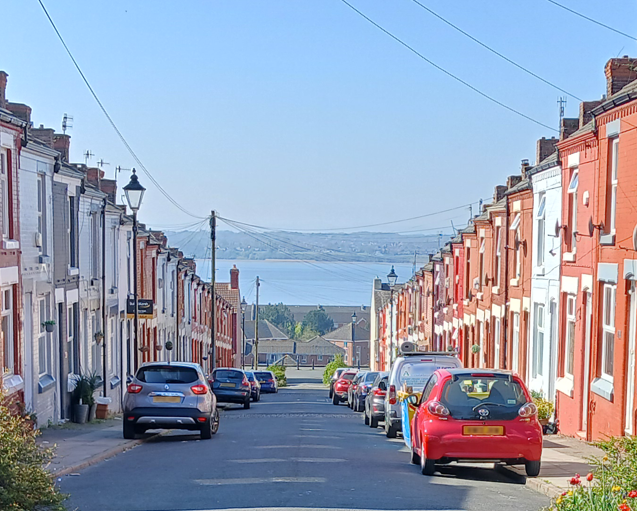Water pumped from the River Mersey could one day be heating thousands of homes and business in Liverpool, thanks to new energy plans drawn up by the City Council.
Liverpool City Council’s Cabinet will decide at a meeting on Tuesday 15 April whether to approve plans for the Advanced Zoning programme (AZP) which could see less reliance on gas to heat property helping to drive down costs and carbon emissions.
If the AZP is fully built it has the potential to help Liverpool in its net zero ambitions by generating savings of up to 72,000 tonnes of CO2 every year. This is the equivalent to the annual emissions of around 21,000 homes.
Heat networks, also known as district heating, provide heat from a central source to multiple buildings through a network of underground pipes. The heat sources identified in Liverpool include not only the river but also the wastewater treatment plant at Sandon Dock next to Everton Football Club’s new stadium.
This technology has the potential to significantly reduce carbon emissions, improve energy efficiency, and lower heating costs for residents and businesses.
The City Council report identifies key areas in Liverpool where heat network deployment could be most effective, taking into account factors such as building density, heat demand, and potential heat sources.
The largest zone that could be built is in Liverpool City Centre. It encompasses a large area of heat demand, from the retail hub in the centre to the Knowledge Quarter and towards Anfield. This heating zone alone would include about 340 buildings in the city.
The Speke and Garston areas could also benefit from the creation of their own heat network, using heat generated from Garston docks and industrial centre in Halewood, such as Jaguar Land Rover.
These plans pave the way for further investment and development of sustainable heating infrastructure in the city.
The publication of this report is a crucial step in the Liverpool City Council’s broader strategy to decarbonize heat, which currently accounts for a substantial portion of the city’s carbon emissions.
Liverpool City Council will now be encouraging developers and investors to build heat network projects in Liverpool.
The Council is aiming to accelerate the delivery and construction of heat network zones, develop best practice guidance and provide project development support services.
Earlier this year Liverpool City Council announced a plan to connect its head office at the Cunard Building at the Pier Head to the Mersey Heat District Heat Network, a system by Peel NRE who are part of the Peel Group.
Liverpool City Region Combined Authority are also looking at harnessing the power of the River Mersey to generate electricity. With its huge tidal range, a tidal power scheme on the Mersey could produce enough clean, green electricity to power every home in the city region for more than a hundred years, while also creating thousands of jobs.
Cllr Councillor Liam Robinson, Leader of Liverpool City Council, said: “The River Mersey made Liverpool, it has been the source of our success for centuries. It has helped shape who we are as a city, defining our identity and culture which in turn has had a unique global impact.
“The history of the city and the river have always been intertwined, and so for it to be a resource that can shape our future is only fitting.
“Now, in the 21st century the river could become a crucial element in how we source energy for our homes and businesses. From fuelling our economy, the river could be the answer for the energy challenge we need to reach net zero.
“These plans confirm Liverpool’s potential to lead the way in adopting new heat network technology and reaching our net zero targets.
“The AZP could also see a huge improvement in air quality in the city, improving the lives of thousands of residents who currently suffer respiratory ailments.
“Not only could there be a massive reduction in carbon emissions, but it would make a huge contribution in reducing people’s energy costs. Increasing residents’ disposable income will help the Liverpool economy to thrive. And this would be a supply of heat that would not be affected by global politics.
“Using our resources and technology more efficiently than the way homes and businesses are currently heated will benefit us economically and environmentally. This is a win-win.
“By embracing these greener heating solutions, we can make significant strides towards our climate goals while also providing more affordable and reliable heat to our communities.”


